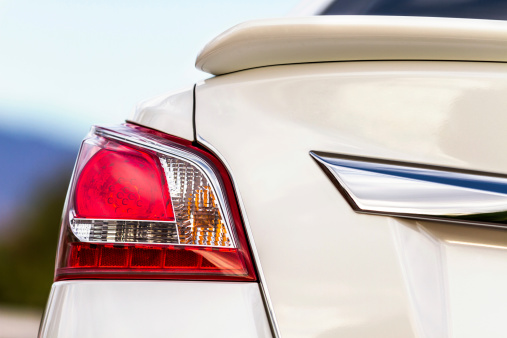Contemporary automobiles of all kinds, from small SUVs to heavy work trucks, are becoming more advanced with each passing year as consumers demand additional features and improved designs from each new model. Automotive decorative metal trim plays a large part in the aesthetic appeal of these vehicles, and well-chosen decorative elements can give a vehicle an edge over another in consumers’ minds.
Designers working in the automotive industry have a wide variety of manufacturing techniques to choose from as they envision decorative parts and trim. When choosing a manufacturing process, automotive designers must consider not only the appearance of the design elements but also their durability, as well as material and production costs. There are several main methods of manufacturing automotive metal decorative trim, each with its own advantages and limitations.
Plastic Molding
When durability is not of particular concern, plastic molding can be used to achieve many forms and colors. For example, plastic molding is often used for the interior parts since decorative parts inside cars will be protected from the elements.
Colors can be molded into the plastic or the material can be combined with metals such as chrome to create different finishes. However, plastic molding should not be used for external or weight-bearing elements because of its limited durability.
Chrome-Plated Die-Cast Zinc
Decorative metal trim can also be made from die-cast zinc with chrome plating. This technique is a good choice for low-volume parts with complex designs. For example, chrome-plated zinc die casting is often used for external trim pieces that must combine elaborate details with weather resistance, such as a brand logo or nameplate.
Even if a larger decorative element is not appropriate for zinc die casting itself, this technique may still be used for smaller accent pieces that are then added to larger designs.
Aluminum Extrusions
Automotive decorative metal trim can also be made with aluminum extrusions. Extrusions can be finished in a variety of ways to achieve a desired look, including burnishing, polishing, anodizing, plating and painting. Like zinc die-castings, extrusions may be used as accent pieces for larger components.
Roll Forming
Both steel and aluminum can also be used to roll form decorative metal trim. Roll forming is a valuable alternative when the decorative part needs not only to look attractive, but also to provide structural support without being too heavy.
Various types of steel may be used for roll forming, including carbon steel, pre-painted steel, vinyl clad steel, and stainless steel, along with aluminum. However, roll forming can only be used to create symmetrical, curved pieces.
Tubular Stamping
For complex design elements that demand more manufacturing adaptability, such as asymmetrical decorations, tubular stamping is a great option to consider. Stamping is a very cost-effective technique and extra design elements can often be added at little additional expense. The stamping process also results in minimal material waste, further reducing costs.
Many different kinds of metals can be stamped and then finished in a multitude of ways, meaning that this process has a wide variety of applications when it comes to manufacturing automotive trim.
Tubular Hydroforming
Finally, tubular hydroforming can be used to create decorative metal trim. While many think that tubular hydroforming can only be used to manufacture functional components, this process can also be used for design elements as well. For instance, hydroforming can be used to create the grip indents for individual fingers on a door handle or other nuanced design features that may not be possible to create with other manufacturing methods.
As with other manufacturing techniques, parts made via tubular hydroforming can be painted, brushed, polished, or plated to achieve the desired finish.
Next Steps for Selecting a Decorative Metal Trim Manufacturing Process
With each decorative metal trim project, it’s a good idea to investigate several manufacturing processes. From there, decide on the one that seems to be the best fit based on its suitability for the design, the durability and wear requirements of the finished product, the materials available for the process, and the production costs.
If you need help taking these next steps, Mills Products has more than 70 years of history in the metal fabrication business and we offer roll forming, tubular stamping, and tubular hydroforming all in one place. This uniquely positions us to help you select the best metal forming process in order to meet your manufacturing needs when it comes to automotive decorative metal trim. Please contact us or call us at (423) 745-9090 for a consultation.


